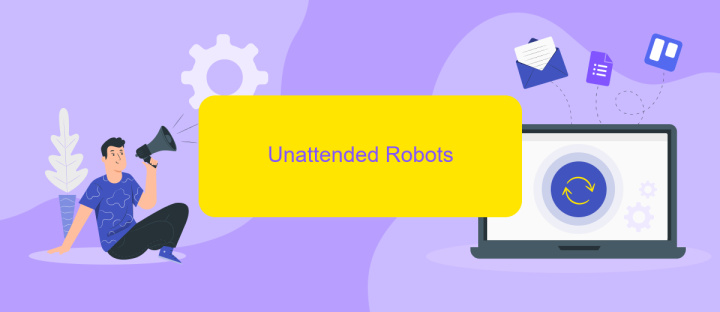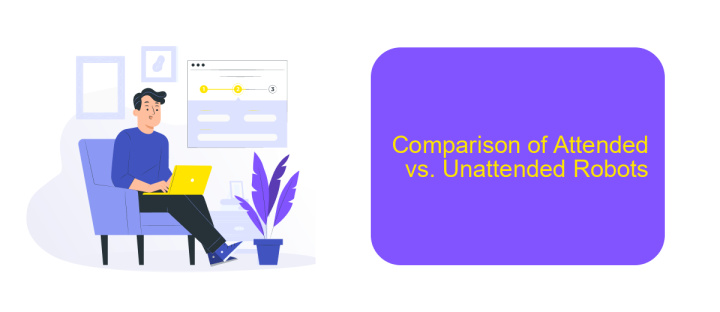Attended Robot Vs Unattended Robot UiPath
In the realm of robotic process automation (RPA), understanding the distinction between attended and unattended robots is crucial for optimizing workflows. Attended robots assist human workers in real-time, enhancing productivity by handling repetitive tasks. In contrast, unattended robots operate independently, executing processes without human intervention. This article delves into the key differences, benefits, and use cases of attended and unattended robots in UiPath.
Introduction
In the rapidly evolving field of robotic process automation (RPA), understanding the distinctions between attended and unattended robots is crucial for optimizing business processes. UiPath, a leading RPA platform, offers both types of robots, each designed to cater to specific operational needs. Attended robots require human intervention and are typically used to assist employees with repetitive tasks, while unattended robots operate independently, executing tasks without human involvement.
- Attended Robots: These are designed to work alongside humans, providing real-time assistance and improving productivity.
- Unattended Robots: These operate autonomously, handling high-volume tasks and processes without the need for human intervention.
Choosing between attended and unattended robots depends on the specific requirements of your business processes. For instance, attended robots are ideal for tasks that require frequent human interaction, such as customer service. On the other hand, unattended robots excel in back-office operations where tasks can be automated end-to-end. Tools like ApiX-Drive can further enhance the integration of these robots into various systems, streamlining workflows and ensuring seamless automation.
Attended Robots

Attended robots, also known as human-in-the-loop robots, are designed to work alongside human employees to enhance productivity and efficiency. These robots are typically deployed on the user's desktop and are triggered by specific user actions or commands. They excel in tasks that require real-time decision-making and human intervention, such as customer service, data entry, and complex transaction processing. By automating repetitive and mundane tasks, attended robots allow employees to focus on more strategic and value-added activities.
One of the key advantages of attended robots is their ability to seamlessly integrate with various applications and systems. Tools like ApiX-Drive can facilitate this integration by providing a simple and efficient way to connect different software and automate workflows. ApiX-Drive supports a wide range of applications, enabling attended robots to interact with multiple systems without the need for extensive coding or technical expertise. This not only streamlines operations but also ensures that data flows smoothly across different platforms, enhancing overall productivity and accuracy.
Unattended Robots

Unattended Robots are designed to operate without human intervention, executing tasks autonomously in the background. These robots are ideal for processes that require high-volume, repetitive tasks and can work around the clock, increasing efficiency and productivity. They can be scheduled to run at specific times, triggered by events, or managed remotely, ensuring seamless workflow automation.
- High scalability: Unattended Robots can handle multiple tasks simultaneously, making them suitable for large-scale operations.
- Cost-effective: By minimizing human involvement, these robots reduce labor costs and the potential for human error.
- Enhanced accuracy: Unattended Robots follow predefined rules and workflows, ensuring consistent and error-free execution.
- Integration capabilities: Tools like ApiX-Drive help in integrating various applications, enabling Unattended Robots to interact with different systems and databases seamlessly.
- 24/7 operation: These robots can work continuously without breaks, significantly boosting productivity.
Unattended Robots are particularly beneficial for industries such as finance, healthcare, and customer service, where they can manage tasks like data entry, invoice processing, and report generation. By leveraging integration services like ApiX-Drive, organizations can streamline their workflows and ensure that their automation processes are both efficient and effective.
Comparison of Attended vs. Unattended Robots

Attended robots in UiPath are designed to assist human workers by automating tasks that require direct human intervention. These robots operate on the same workstation as the user and can be triggered by specific actions or commands. Unattended robots, on the other hand, operate independently without human involvement. They are typically deployed on dedicated servers and can run complex workflows 24/7.
The key differences between attended and unattended robots can be summarized as follows:
- Operation: Attended robots require human interaction, while unattended robots function autonomously.
- Deployment: Attended robots are deployed on user workstations, whereas unattended robots are deployed on servers.
- Use Case: Attended robots are ideal for front-office tasks, while unattended robots are suited for back-office operations.
- Triggers: Attended robots are user-initiated, while unattended robots can be scheduled or triggered by specific events.
Choosing between attended and unattended robots depends on the specific needs of your organization. For seamless integration of these robots with other systems, services like ApiX-Drive can be invaluable. ApiX-Drive facilitates the automation of data exchange between different applications, enhancing the efficiency of both attended and unattended robots.
Conclusion
In conclusion, both attended and unattended robots in UiPath offer distinct advantages tailored to specific business needs. Attended robots excel in scenarios requiring human-robot collaboration, providing real-time assistance and enhancing productivity in customer service or data entry tasks. Conversely, unattended robots operate autonomously, ideal for high-volume, repetitive tasks that do not require human intervention, significantly reducing operational costs and increasing efficiency.
Choosing between attended and unattended robots depends on the nature of the tasks and the desired outcome. Integrating these robots with services like ApiX-Drive can streamline workflows by automating data transfers between various applications and systems, further enhancing overall efficiency. By leveraging the strengths of both robot types and utilizing integration tools, businesses can achieve a balanced and optimized automation strategy, driving growth and innovation.
FAQ
What is the main difference between Attended and Unattended Robots in UiPath?
Can Attended Robots work without human intervention?
What are some common use cases for Unattended Robots?
How can businesses integrate UiPath Robots with their existing systems?
Which type of robot is more cost-effective for large-scale automation?
Apix-Drive is a universal tool that will quickly streamline any workflow, freeing you from routine and possible financial losses. Try ApiX-Drive in action and see how useful it is for you personally. In the meantime, when you are setting up connections between systems, think about where you are investing your free time, because now you will have much more of it.

